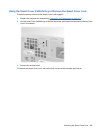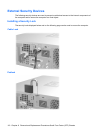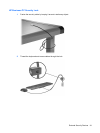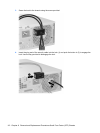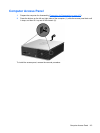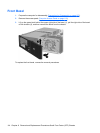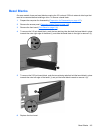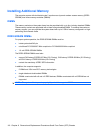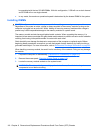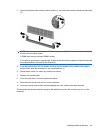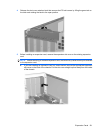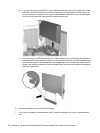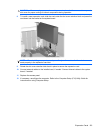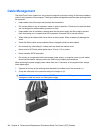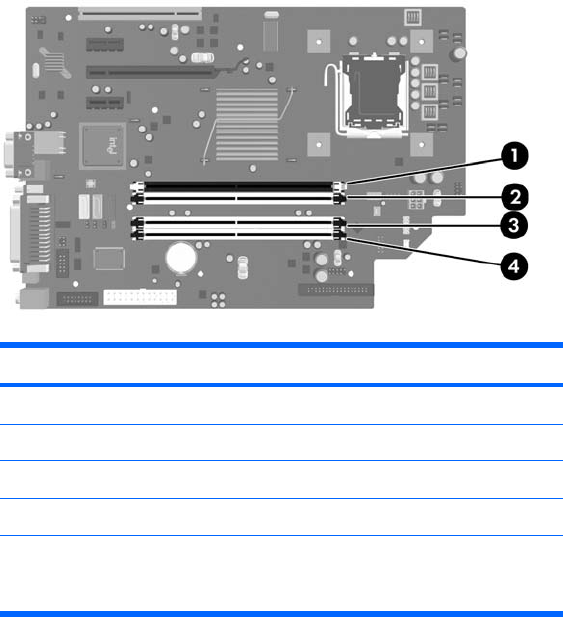
Populating DIMM Sockets
There are four DIMM sockets on the system board, with two sockets per channel. The sockets are
labeled DIMM1, DIMM2, DIMM3, and DIMM4. Sockets DIMM1 and DIMM2 operate in memory channel
A. Sockets DIMM3 and DIMM4 operate in memory channel B.
Item Description Socket Color
1 DIMM1 socket, Channel A Black
2 DIMM2 socket, Channel A White
3 DIMM3 socket, Channel B White
4 DIMM4 socket, Channel B White
NOTE: A DIMM must occupy the black DIMM1 socket. Otherwise, the system
will display a POST error message indicating that a memory module must be
installed in the black socket.
The system will automatically operate in single channel mode, dual channel mode, or flex mode,
depending on how the DIMMs are installed.
●
The system will operate in single channel mode if the DIMM sockets are populated in one channel
only.
●
The system will operate in a higher-performing dual channel mode if the total memory capacity of
the DIMMs in Channel A is equal to the total memory capacity of the DIMMs in Channel B. The
technology and device width can vary between the channels. For example, if Channel A is
populated with two 512-MB DIMMs and Channel B is populated with one 1GB DIMM, the system
will operate in dual channel mode.
●
The system will operate in flex mode if the total memory capacity of the DIMMs in Channel A is not
equal to the total memory capacity of the DIMMs in Channel B. In flex mode, the channel populated
with the least amount of memory describes the total amount of memory assigned to dual channel
and the remainder is assigned to single channel. For optimal speed, the channels should be
balanced so that the largest amount of memory is spread between the two channels. If one channel
will have more memory than the other, the larger amount should be assigned to Channel A. For
example, if you are populating the sockets with one 1-GB DIMM, and three 512-MB DIMMs,
Channel A should be populated with the 1-GB DIMM and one 512-MB DIMM, and Channel B should
Installing Additional Memory 117



